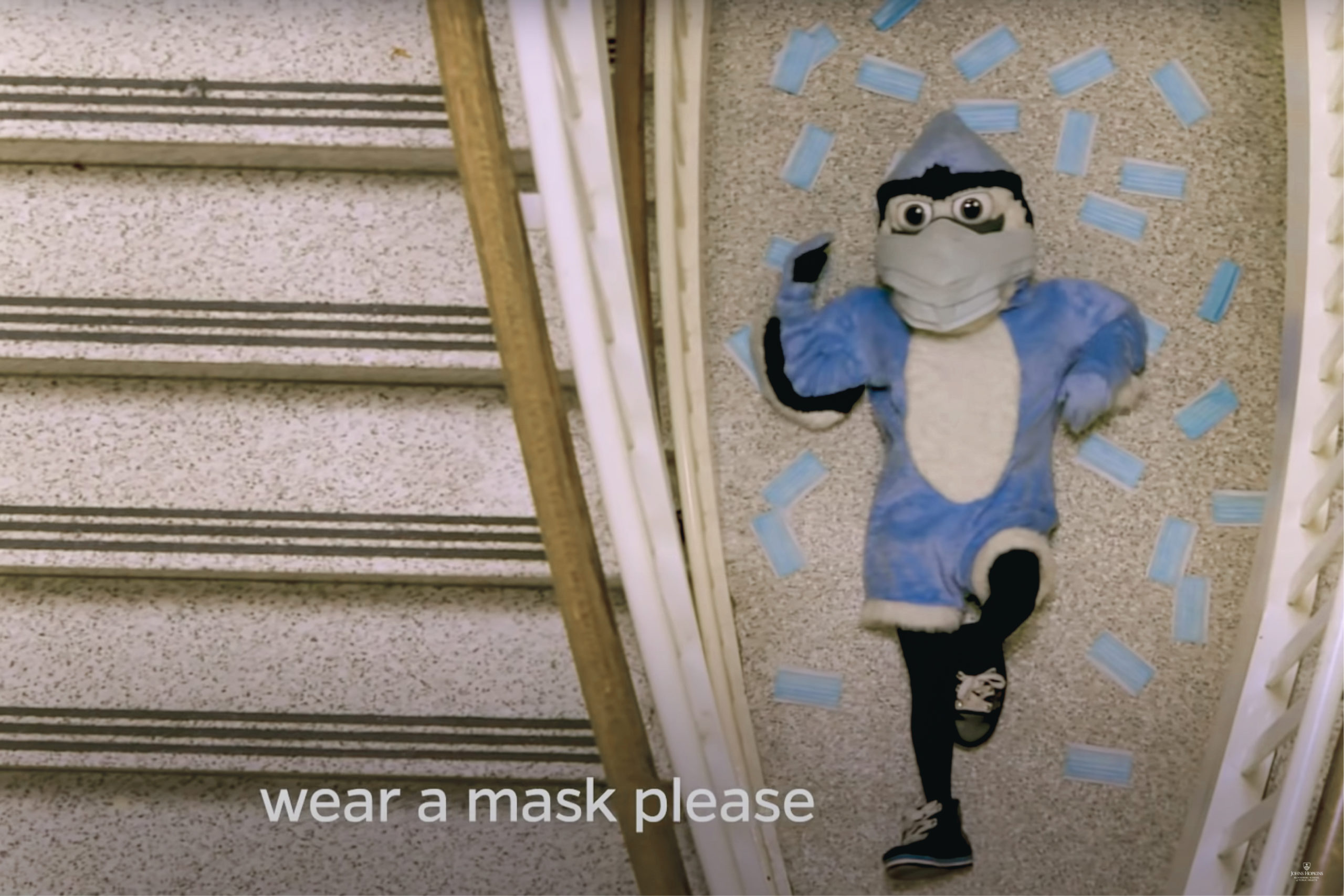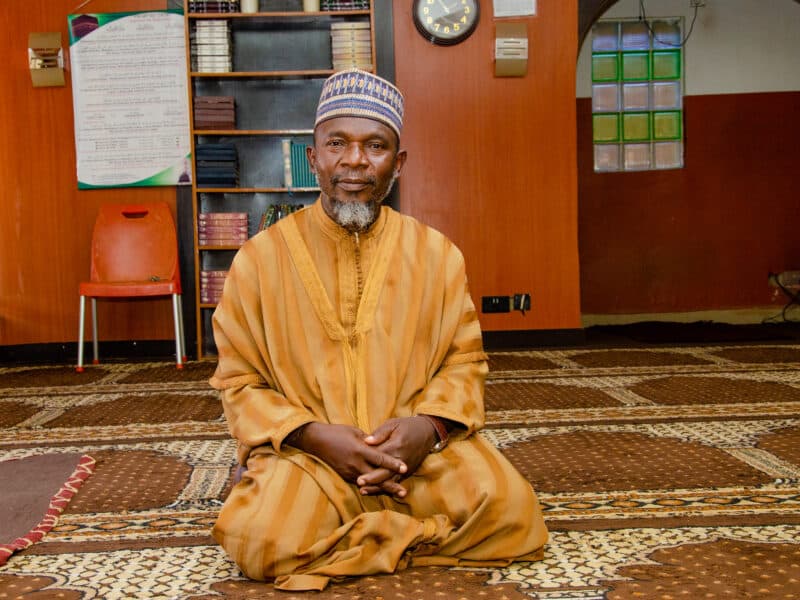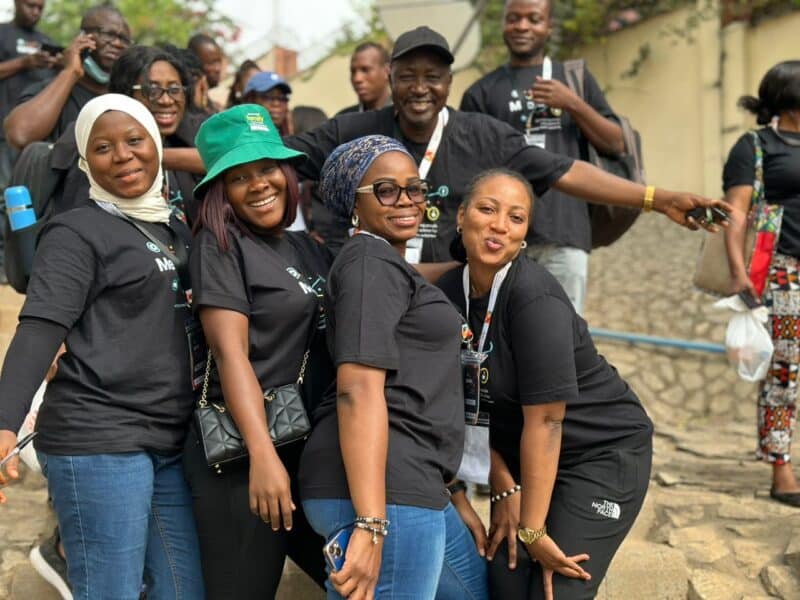Communication in a pandemic like COVID-19 is one of the strongest tools we have to stem the spread of the virus, which has killed more than 1.7 million people worldwide. At the Johns Hopkins Center for Communication Programs, we are focused on ensuring that the right messages get to people at the right time in a way that inspires them to take appropriate action to protect themselves and their families.
Our colleagues at the Johns Hopkins Bloomberg School of Public Health have been a shining example of how to use social media to spread good, accurate COVID-19 information to a wide audience — and do it in unexpected and entertaining ways. CCP’s Stephanie Desmon sat down with Nick Moran, who heads the social media operation at the school as associate director of audience development, to talk about why he and his team shifted strategy and how it has paid off.
Stephanie Desmon: Your social media channels have been all over this public health crisis, with graphics and videos that have taken on a wildly different tone than before. Can you describe how and why your social media strategy shifted during the pandemic?
Nick Moran: We knew in the earliest days of the outbreak that if ever there was a moment for public health experts to share their messages directly with as wide an audience as possible, that time was now. The entire world’s attention was on COVID-19, and there were so many evolving and, at times, competing voices about how people should navigate it. We knew that people — all people — needed to understand the evidence.

Nick Moran
Meanwhile, almost everyone at Johns Hopkins shifted to remote work and learning in early March, so we immediately lost access to some of our steadiest sources of content: on-campus activities, pictures of campus, etc. We couldn’t even use pre-existing photos in our Instagram posts because suddenly it felt inappropriate to depict people congregating indoors without masks.
Without photography, we had to produce more illustrations and animations. With an urgent and global need for trustworthy information on the pandemic, we had to broaden our audience beyond the groups we typically focus on (like prospective students, for example).
To accomplish that goal, we began experimenting with tone. We experimented with form. We tinkered until we landed on a good model marrying “education” with “engagement”— content that informs people but is also highly shareable and accessible to a general audience that may not necessarily be steeped in public health terminology.
SD: People seem to really love it. What have you seen in response to this shift?
NM: It’s been heartening to see people react positively. I appreciate all of the comments we get — especially all of the ones talking about how our social team deserves big raises!
The single biggest change in our audience’s behavior from last year to this year is that people are now more likely to share our content within their own social networks. This is mostly because of how we’re designing the content: it’s meant to stand alone without requiring that people click a link to learn more. The links are included if people want to go to our website to read more, but the content gets the key points across, too.
SD: You definitely look like you’re having a lot of fun. At the same time, this is a deadly pandemic. How do you find a balance between providing accurate COVID-19 information and entertaining your audiences?
NM: We’re definitely having fun. But we try to stay conscious of lines we shouldn’t cross. I try to keep the key messages in mind. A great example is mask wearing. Our key message for months has been that wearing masks is one of the ways we can help stop the spread of COVID-19. So we can make jokes about absurd ways to not wear a mask, or silly and unexpected benefits of wearing a mask, but we’d avoid a joke if it implied that wearing a mask was silly or ineffective. This is because at the end of the day, we want to reinforce a desired behavior, that people wear masks.
A big challenge in traditional public health messaging is that it can often come off as scolding or shaming if it’s too focused on what people shouldn’t do. If people on social media are talking about “World Donut Day,” none of them want us to post about how it’d be better for them to eat an apple instead. For the most part, we try to orient our content around the less burdensome things people can do to help themselves and their communities, or how they can reduce risks of doing something — like traveling. That’s what people want to see.
Of course, there have been some exceptions to this over the past few months, notably when we offered some tongue-in-cheek guidance on how to throw a frat party during the pandemic (spoiler: don’t). I think there’s room for both types of messages (what you should and shouldn’t do), but the key is to avoid being too negative too often.
SD: We have seen so much misinformation being spread throughout this pandemic. Have you faced challenges in translating science content for social media?
NM: I think the key for translating science — and also probably just for communicating on social media in general — is to anticipate the immediate questions people will have as soon as they see your content and address those questions at the outset. This can be done in a few ways. Using plain language instead of jargon is always a good place to start. Framing a sentence so that it addresses a concern immediately is a good tactic. (For instance, “COVID-19 is not ‘just the flu’” vs. “COVID-19 is a severe illness.”) The more we can do things like that, the better we’re translating. And the better we’re translating, the less likely it is that people will misunderstand or argue with us.
SD: What’s your dream influencer campaign?
NM: So Cardi B retweeted a music video parody we launched last month. Before that, I probably would have said that Cardi B engaging with that video would’ve been my dream, but now I need to go back to the drawing board.
I think in terms of more involved collaborations, I’d really love to work with major athletes. Getting to work with someone like LeBron James to promote vaccine confidence would be amazing! Here in Baltimore, having Lamar Jackson work with us on a campaign would be a dream come true.
SD: What can we expect to see next?
NM: With vaccines on the way, we’re entering a new phase of the pandemic. There’s finally an end in sight for many people, and it’s maybe not as soon as next month, but it’s at least something we can start planning for.
Two of our key messages until that day comes are going to be: we all really need to stay committed to our infection control measures even though we might feel inclined to let down our guards a little, and also that we really need to make sure that people want to take the vaccine when it’s available to them. I think our content will take on some new directions in the weeks ahead to reflect those messages and more generally to remind people that this is not how our way of life will be forever. We’re going to be able to return to some degree of normalcy in the near future, and that’s thanks to advancements in science.
We got a great response to the “Students React to Social Media Comments” video we did with epidemiology students, so we’re planning to reuse that format. I’m in the early stages of one specifically about vaccine-related questions, but I’m also hoping to take the opportunity to discuss non-COVID topics. We get plenty of questions about climate change and mental health, so I’d like to give experts in those fields a chance to engage in this way.






